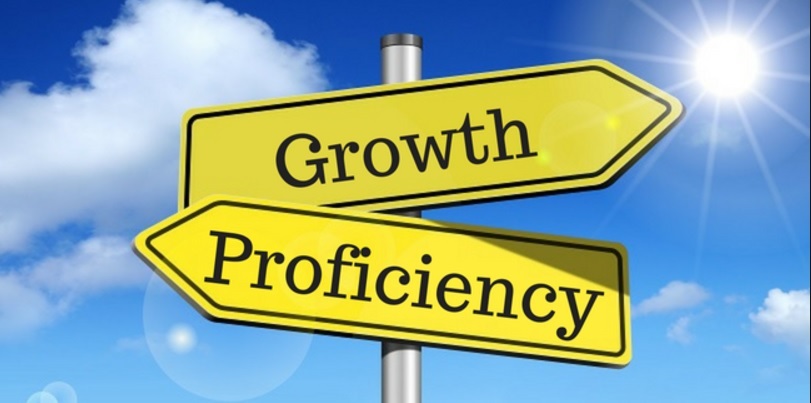The subject of Growth and Proficiency has been coming up in the literature a lot lately. This may be a good thing for us, as Imagine has been leading the call to focus on student growth rather than proficiency for a long time now.
Matt Barnum, in a recent article in the74million.org, took the opportunity to explain why the growth-versus-proficiency debate is so critical when assessing how to best hold schools accountable and, ultimately, improve the learning outcomes of all students. He cited a 2008 survey showing that more than two in three education researchers believe growth is a good way to measure school quality. (Just 9 percent said that “raw test scores”—i.e., proficiency alone—is the preferred tactic.).
A recent Blog post by Jan Bryan, Ed.D, Vice President and National Education Officer for Renaissance Learning, used a common analogy to explain this difference:
“In the simplest analogy possible, proficiency is a destination; growth is the journey”.
Jan goes on to define proficiency as “being about a specific level of achievement at a specific point in time. In particular, it is about achievement that is considered “good enough” at that point in time”. She defines growth as “focusing on learning over time, and places greater emphasis on how much students learn than on what they can demonstrate by the end of the year”
This analogy does a good job in reflecting on growth and accurately reveals how proficiency is used in today’s educational environment. In doing this it exposes its insidious impact that the concept of proficiency frequently demonstrates. Proficiency as a destination implies a stopping point.
When piloting a plane, I file a flight plan (journey map) from Point A to point B, which is my destination. When I land safely at point B and have parked the plane, I have accomplished the goal of the flight and can now turn to other non-flight related activities. This is one of the hidden dangers of the proficiency idea. An artificial point (test score, ability to play specific musical compositions with accuracy, ability to run a mile in a specific time, etc.) is established as a “goal” to be achieved or a destination to be arrived at. When that goal is achieved, the individual is said to have “made it” and can now relax. The teacher/coach can now devote more resources to the other students that are close to proficient but not yet there (those far away will not make it in the near future anyway). This concept of a destination or goal distorts the true nature of education, which is, inevitably, a lifelong process.
In flying, we use the concept of a “waypoint”, which is a specific point along the journey used as a sign of progress where we check our position and perhaps adjust our heading (direction). Pilots don’t stop (even for a second) upon reaching a waypoint, they continue flying (as they must if they want to avoid falling out of the sky). They continue their rate of progress (ground speed) along the journey. This rate of progress along a journey is rather independent of the waypoint and is a much better measure of the capability of an airplane that where it happens to be at a particular moment in time.
We can identify numerous major waypoints in the educational (or learning) journey (proficiency, High School Graduation, B.A., M.A., Ph.D., post-doctoral study, etc.). We speak of some of these waypoints as a terminal degree, but they do not represent the end of the learning journey as professional learning and research contributing to the world of knowledge continues. The journey of learning should continue unabated as we progress through and beyond these various waypoints. We measure the capability of the learning environment by utilizing learning gains (similar to the speed of an airplane) rather than fixating on the current position.
The flying analogy does break down since, in flying, there is necessarily a destination where we land and terminate our journey through the skies. For the journey of learning, there should be no landing spot where learning stops and we move on to other things.
I suggest that we think of the educational or learning process as a lifetime journey with various markers (waypoints) along the way, rather than as setting a destination or goal which, upon reaching, we can declare that we have made it and concentrate on other things. As we progress from waypoint to waypoint (even from one grade level to another) the methodology and style of our learning activities may change, just as a waypoint may indicate a heading change or turn for a pilot. We may move from a formal classroom to a work environment and “real life” but our educational journey should continue undiminished.

